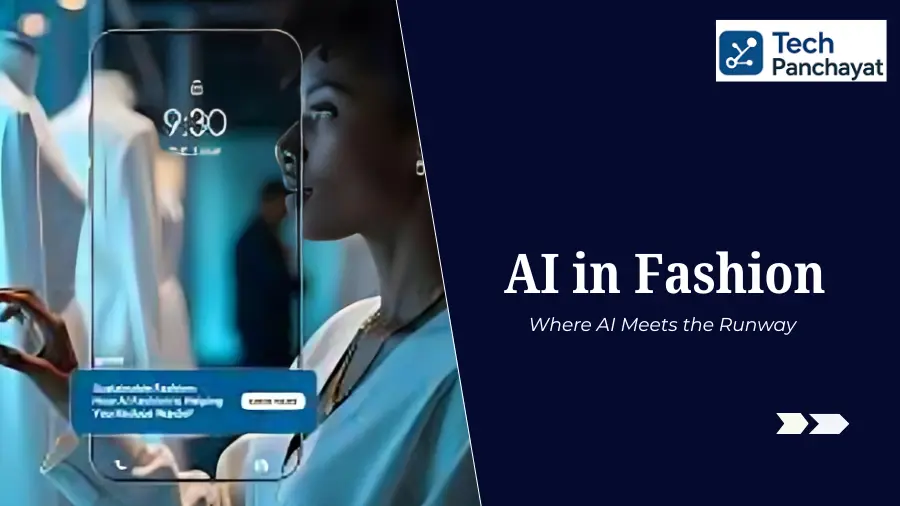The fashion world has always been about creativity, culture, and personal style. But in 2025, a new force is shaping the way we dress: AI in Fashion. From personalized shopping recommendations to predictive style forecasting, artificial intelligence is quietly becoming the stylist behind your wardrobe. Whether you browse Amazon Fashion, Myntra, or Zara, algorithms decide what outfits you see, what colors are recommended, and even which sizes fit you best. AI in Fashion is not just about convenience, it’s about personalization, efficiency, and trend prediction. Retailers leverage artificial intelligence to analyze shopping behavior, predict upcoming styles, and optimize supply chains. Meanwhile, consumers enjoy a tailored experience where technology understands their unique preferences. But with so much influence from algorithms, one question remains: Are we choosing what we wear, or are algorithms choosing for us?
In addition to shaping individual shopping experiences, AI is transforming the fashion industry on a massive scale. From predicting global trends to reducing overproduction, artificial intelligence enables brands to operate with unprecedented accuracy and speed. Designers are now using AI-powered tools to analyze social media trends, customer feedback, and market data to create collections that resonate with real-time consumer demand. This fusion of creativity and data ensures that fashion brands stay ahead in a highly competitive market while also catering to increasingly diverse customer tastes.
At TechPanchayat, we dive deep into how AI in Fashion works, the benefits it brings to consumers and retailers, and the ethical debates surrounding this fast-changing industry. By exploring the intersection of technology and style, we aim to help readers understand how algorithms are quietly shaping the clothes they choose and the trends they follow.
How AI in Fashion Personalizes Your Shopping Experience
When you shop online, the products displayed aren’t random. AI in Fashion uses advanced recommendation engines powered by machine learning to study your unique shopping patterns:
Your past purchases: AI examines your previous orders to understand your style, preferred brands, and even your typical spending range. By analyzing what you’ve bought before, it can predict what new items you’re likely to enjoy.
Browsing history: Every product you click, view, or linger on provides valuable data. AI tracks this to determine your interests and surfaces similar items in your feed.
Favorite colors, fits, and fabrics: AI identifies patterns in your preferences, whether you prefer cotton over silk, slim fits over oversized, or neutral tones over bright colors. This ensures recommendations match your taste.
Seasonal and regional shopping patterns: AI considers weather & regional patterns — something McKinsey AI reports highlight as key for fashion retailers.
This level of personalization allows retailers to build a digital fashion profile for each user. For example, if you often buy minimalist clothing in neutral shades, AI algorithms highlight similar items while filtering out flashy styles. The result is a tailored, convenient shopping experience that feels like a personal stylist is guiding you.
How AI in Fashion Personalizes Your Shopping Experience
When you shop online, the products displayed aren’t random. AI in Fashion uses advanced recommendation engines powered by machine learning to study your unique shopping patterns:
Your past purchases: AI in Fashion examines your previous orders to understand your style, preferred brands, and typical spending range. By analyzing what you’ve bought before, it can predict what new items you’re likely to enjoy.
Browsing history: Every product you click, view, or linger on provides valuable data. AI in Fashion tracks this to determine your interests and surfaces similar items in your feed.
Favorite colors, fits, and fabrics: AI in Fashion identifies patterns in your preferences, whether you prefer cotton over silk, slim fits over oversized, or neutral tones over bright colors.
Seasonal and regional shopping patterns: Algorithms consider seasonal trends (like winter jackets or summer dresses) and location-based preferences, so the items suggested are timely and relevant.
This level of personalization allows retailers to build a digital fashion profile for each user. For example, if you often buy minimalist clothing in neutral shades, AI in Fashion algorithms highlight similar items while filtering out flashy styles. The result is a tailored, convenient shopping experience that feels like a personal stylist is guiding you.
AI in Fashion Trend Forecasting: Predicting the Next Big Look
Fashion trends once depended heavily on magazines and runway shows. Today, AI in Fashion trend forecasting transforms the process into a data-driven science:
Social media scanning: AI in Fashion Tools like Heuritech scan Instagram & TikTok to predict viral styles.
Search query analysis: Platforms track Google Trends Fashion to forecast demand.
Influencer content tracking: Popular influencers often spark micro-trends. AI in Fashion tracks their posts and engagement metrics to forecast what items will gain traction.
For instance, if oversized blazers go viral, AI in Fashion detects the engagement spike and alerts brands to adjust inventory and marketing strategies. This makes fashion companies more agile and responsive, reducing guesswork and helping them launch collections aligned with real-time demand.
Virtual Try-Ons and AI-Powered Styling
One of the biggest challenges of online shopping is uncertainty about fit and style. AI in Fashion addresses this through virtual try-on technology, powered by augmented reality (AR) and computer vision:
Show how an outfit looks on different body types: AI in Fashion enables customers to see clothing virtually on a model or a digital representation of themselves.
Suggest accessories based on your style: AI styling features recommend shoes, bags, or jewelry that complement the outfit.
Provide accurate sizing recommendations: AI in Fashion analyzes your measurements and previous purchases to suggest the perfect size, reducing returns.
This technology enhances confidence, improves shopping experience, and minimizes return rates, turning AI into a personal fashion advisor.
Supply Chain Optimization Through AI in Fashion
Behind every stylish outfit is a complex supply chain, and AI in Fashion helps streamline it:
Demand forecasting: AI in Fashion predicts which items will sell most based on trends, historical sales, and even weather patterns.
Inventory management: Algorithms ensure optimal stock levels, avoiding overstock or shortages.
Waste reduction: Accurate predictions help reduce unsold inventory, supporting sustainable fashion practices.
For example, if data predicts higher demand for summer dresses in April, AI in Fashion helps retailers prepare stock in advance, saving costs and ensuring timely availability.
Ethical Questions: Is AI in Fashion Controlling Our Choices?
While AI offers convenience, it raises ethical concerns:
Consumer autonomy: Are people making independent fashion choices, or is AI in Fashion subtly guiding them toward certain styles?
Data privacy: Fashion apps collect large amounts of personal data. How securely this information is stored and used is a concern.
Homogenization of style: If AI in Fashion promotes trending items, individuality in style could decrease.
Balancing personalization with consumer freedom is key to ensuring AI in Fashion enhances rather than controls style.
The Future of AI in Fashion
AI’s role in fashion will continue to expand and evolve:
Smart Wardrobes: AI apps like Cladwell suggest daily outfits. based on weather, calendar events, and style history.
AI-Generated Clothing: Algorithms may create entirely new designs, giving designers data-driven creative insights.
Sustainable Solutions: It can optimize production, reduce textile waste, and promote eco-friendly practices.
The combination of creativity and intelligence ensures that AI in Fashion will remain a driving force in shaping style, shopping experiences, and the broader fashion ecosystem.
Conclusion
The rise of AI in Fashion is transforming the way we shop, style, and wear clothes. From personalized fashion recommendations to AI-powered trend forecasting and virtual styling tools, algorithms are now the silent stylists shaping our choices. But as technology grows more influential, it is important for consumers to remain aware of the balance between convenience and control.
At TechPanchayat, we continue to explore how AI in Fashion reshapes industries. To dive deeper into AI’s broader role, check out our guide on Agentic AI and discover how intelligent systems are driving innovation across every sector.

